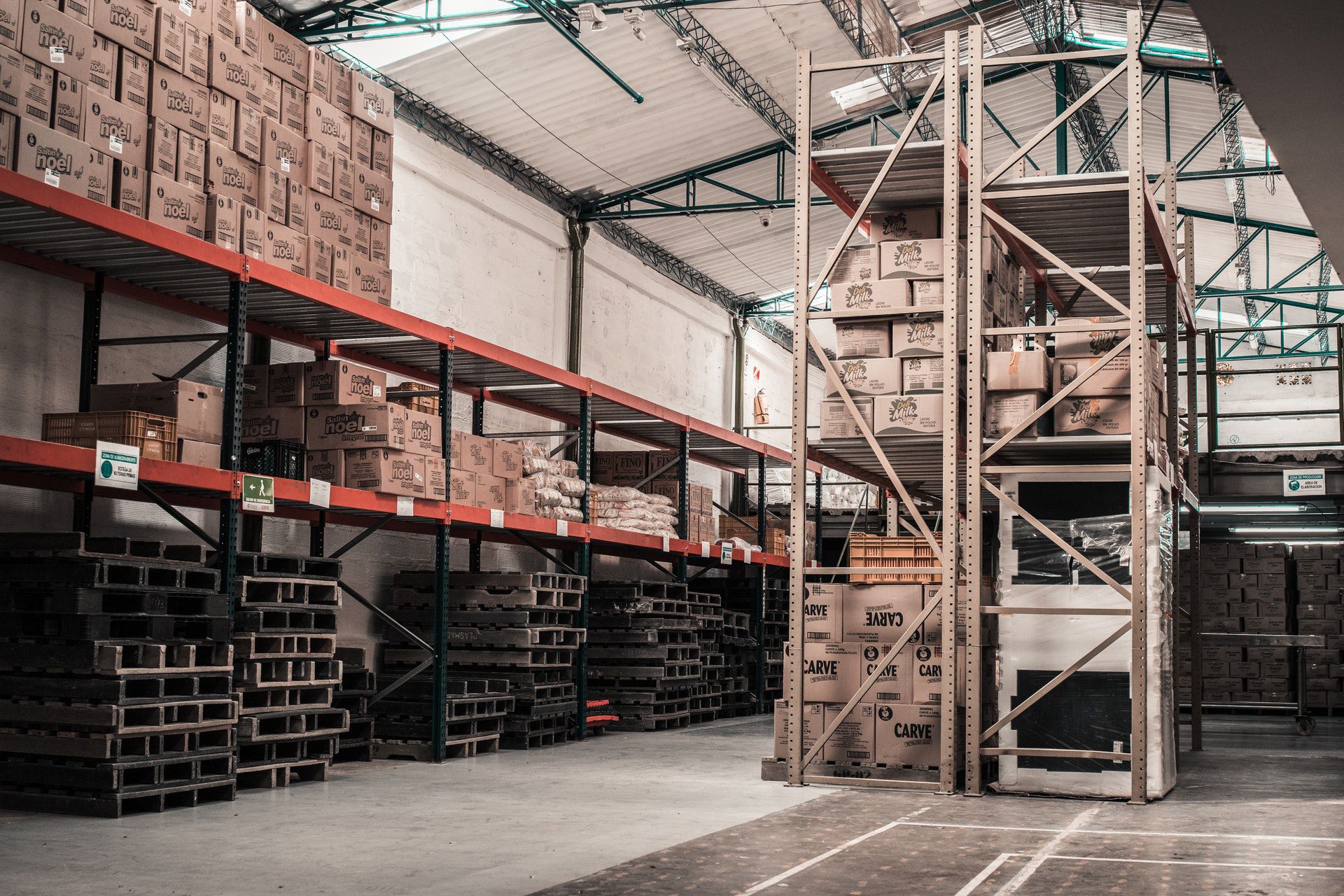Stock Location Example
In this section, we will develop a more detailed example that includes different concepts seen in the previous sections. The following example will use the Stock Location types, the Logistic Flows and the Bill Of Materials.
We have two companies: OpenERP SA and OpenERP US.
We have three products: Product A, Product B and Product C. For each product, we will have to define the Stock Location to determine where to take these products.
To make one unit of Product A, we need the Product B and the Product C. So we will have to define a Bill of Material.
|
Field |
Value |
|---|---|
|
Product |
Product A |
|
Product Qty |
1 |
|
Name |
Product A |
|
BoM Type |
Normal |
|
Company |
OpenERP US |
The different components to produce one unit of Product A are one unit of Product B and one unit of Product C.
|
Company |
What |
|---|---|
|
OpenERP SA |
Sell the Product A |
|
OpenERP SA |
Store the Product C |
|
OpenERP US |
Produce the Product A |
|
OpenERP US |
Store the Product B |
|
Name |
Type |
Product |
Goal of the flow |
|---|---|---|---|
|
Ask for Production |
Pull |
Product A |
OpenERP SA asks OpenERP US to produce the Product A |
|
Launch Production |
Pull |
Product A |
OpenERP US launches the production of the Product A |
|
Send Product to Transit |
Pull |
Product C |
OpenERP US asks for the Product C to OpenERP SA |
|
Get Product from Transit |
Pull |
Product C |
OpenERP US receives the Product C |
Here are the details of the different flows:
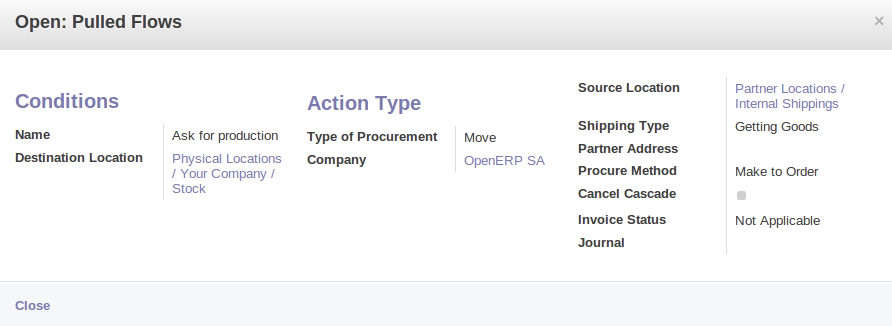
Ask for Production
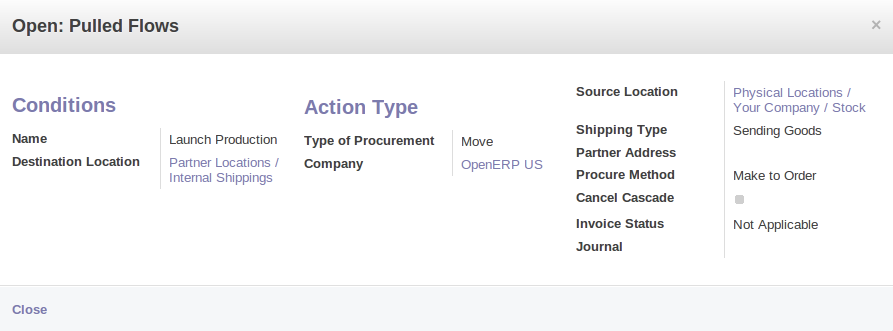
Launch Production
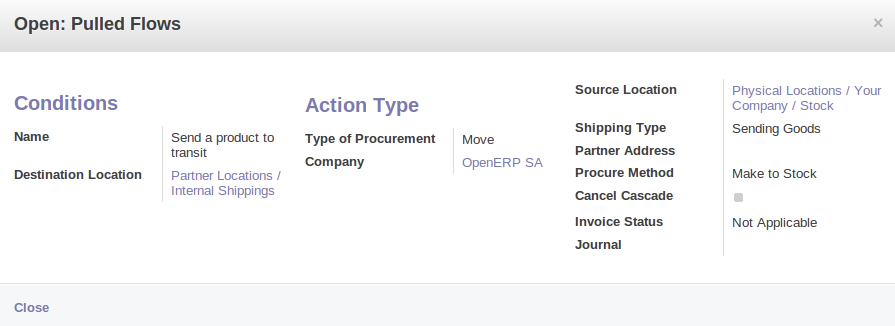
Send Product to Transit
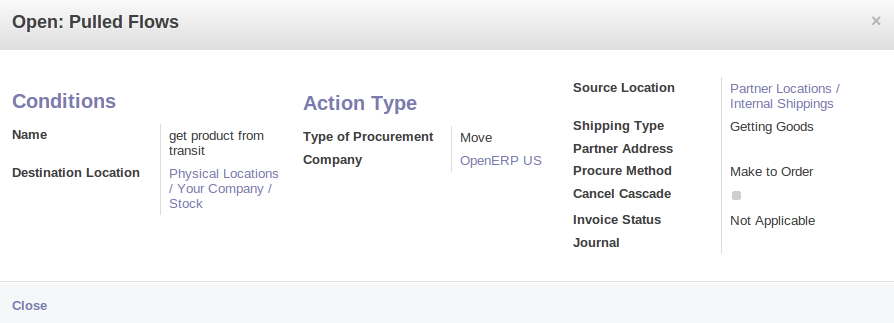
Get Product from Transit
The following stock moves have been generated with this configuration:
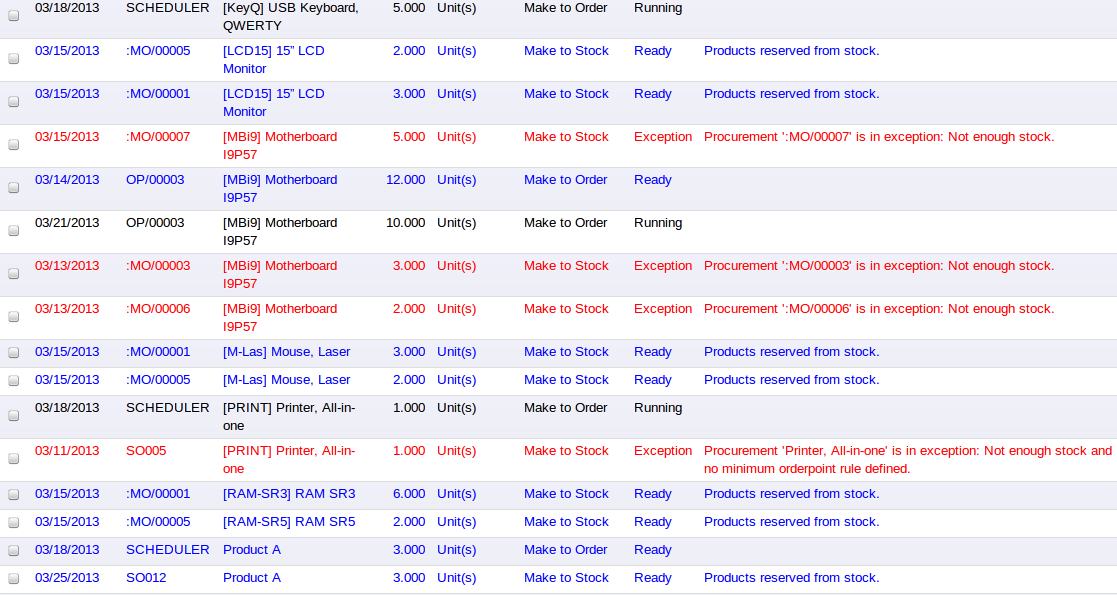
Stock Moves
Because we are working in two different companies, different stock moves have been generated. The products have to move from OpenERP SA to OpenERP US for the products C. After the manufacturing process, the products A have to move from OpenERP US to OpenERP SA to be sold to the customer.
Once you have confirmed the different moves for the products B and C, the Manufacturing Order is in ready to produce status. So you can run the production of the three units of Product A.
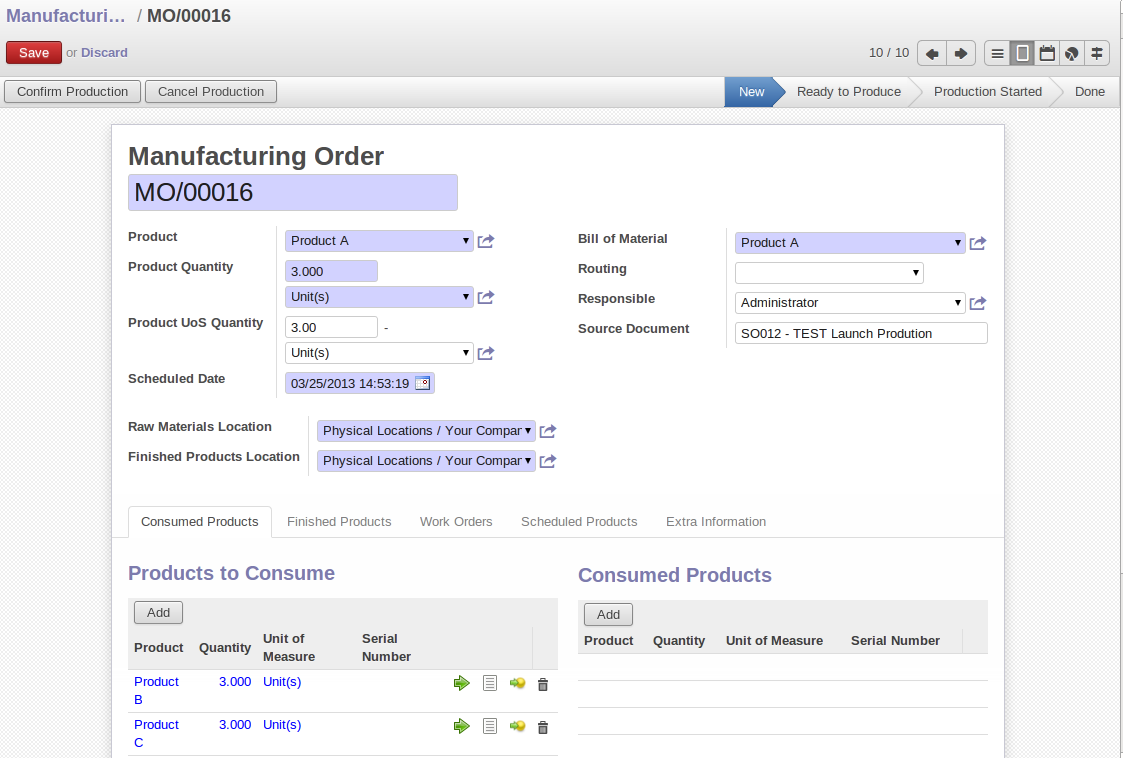
Launch the Production
Once again due to the use of two companies, you have to confirm different deliveries. One to deliver the product from OpenERP US to OpenERP SA and another to deliver the product from OpenERP SA to the customer. Now you have to confirm the delivery of the three units from OpenERP US to OpenERP SA, then to confirm the reception of the products in OpenERP SA and finally, deliver the products to you final customer.
